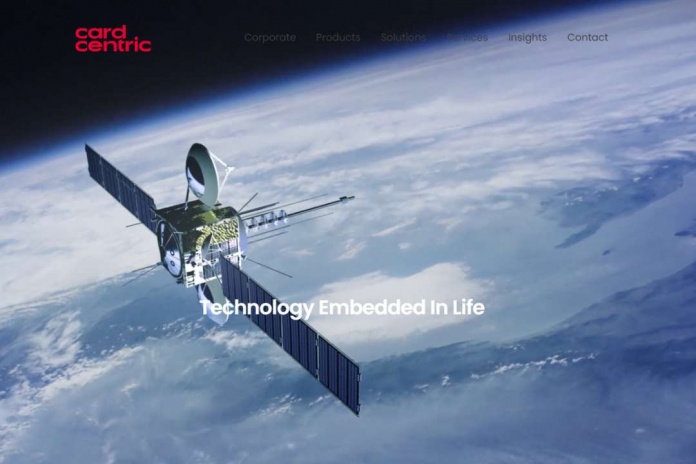How Contactless Payment Systems are Changing the Retail Landscape | Cómo los sistemas de pago sin contacto están cambiando el panorama del comercio minorista
In recent years, the retail landscape has undergone a significant transformation, driven largely by advancements in technology. Among these technological innovations, contactless payment systems have emerged as a game-changer, revolutionizing the way consumers interact with businesses. This shift towards contactless payments, facilitated by technologies like Near Field Communication (NFC) and Radio Frequency Identification (RFID), is not only enhancing convenience for customers but also creating new opportunities and challenges for retailers.
At the heart of this transformation are companies like Card Centric Limited, which specialize in developing and deploying advanced solutions that power contactless payments. This article explores how contactless payment systems are reshaping the retail landscape, the technology behind them, and the implications for businesses and consumers alike.
The Rise of Contactless Payments
Contactless payment systems have been around for more than a decade, but their adoption has accelerated rapidly in recent years. This surge in popularity can be attributed to several factors, including the global shift towards digital transactions, the need for faster and more secure payment methods, and the impact of the COVID-19 pandemic, which heightened concerns about physical contact and hygiene.
Contactless payments allow consumers to make transactions by simply tapping their payment card, smartphone, or wearable device on a compatible terminal. This process eliminates the need for physical contact between the payment device and the terminal, providing a faster and more convenient way to pay. With contactless payments, consumers no longer need to swipe a card, enter a PIN, or handle cash, making the checkout process quicker and more efficient.
The Technology Behind Contactless Payments
The core technology that enables contactless payments is Near Field Communication (NFC), a form of wireless communication that allows devices to exchange data over short distances (typically less than 4 cm). NFC is built on existing RFID technology, which has been used for years in applications such as inventory tracking and access control. In the context of payments, NFC technology enables a secure exchange of payment information between a payment card or mobile device and a point-of-sale (POS) terminal.
When a customer taps their card or device on the terminal, the NFC chip inside the card or device communicates with the terminal, transmitting the payment information. This communication is encrypted to ensure the security of the transaction. The terminal then processes the payment and completes the transaction, typically within a few seconds.
One of the key advantages of NFC technology is its compatibility with a wide range of devices, including smartphones, tablets, and wearable devices. This flexibility has made it possible for consumers to make contactless payments using not only traditional payment cards but also mobile wallets like Apple Pay, Google Pay, and Samsung Pay.
Global Platform SIM Applets and OTA Updates
As contactless payments become more widespread, the need for secure and versatile payment solutions has grown. This is where technologies like Global Platform SIM applets and Over-The-Air (OTA) updates come into play. These technologies enable payment service providers and mobile network operators to manage and update payment credentials and security features remotely, ensuring that consumers can continue to make secure contactless payments without interruption.
A Global Platform SIM applet is a small application stored on a SIM card that can securely store payment credentials and facilitate contactless payments. These applets are designed to work across different mobile devices and networks, providing a standardized and secure environment for payment transactions. The use of Global Platform SIM applets allows payment service providers to offer a consistent and secure payment experience to consumers, regardless of the device or network they are using.
Over-The-Air (OTA) updates are another critical component of contactless payment systems. OTA updates allow payment service providers to remotely update the software and security features of a SIM card or mobile device. This capability is essential for maintaining the security of contactless payment systems, as it enables providers to quickly respond to new security threats and update payment credentials without requiring consumers to replace their SIM cards or devices.
Together, Global Platform SIM applets and OTA updates provide a robust framework for managing and securing contactless payment systems on a global scale. They ensure that consumers can enjoy the convenience of contactless payments while also benefiting from the latest security features and innovations.
The Impact of Contactless Payments on Retail
The adoption of contactless payment systems has had a profound impact on the retail industry. For retailers, these systems offer several key benefits, including faster transaction times, improved customer satisfaction, and the ability to streamline operations. However, they also present new challenges that businesses must navigate to stay competitive in an increasingly digital marketplace.
1. Faster Transaction Times
One of the most significant advantages of contactless payment systems is the speed of transactions. Traditional payment methods, such as swiping a card and entering a PIN, can take several seconds or even minutes to complete. In contrast, contactless payments can be processed in just a few seconds, reducing wait times at the checkout and increasing the efficiency of the payment process.
For retailers, this speed translates into shorter lines and happier customers. Faster transaction times also allow retailers to serve more customers in a given period, potentially increasing sales and revenue. In high-volume retail environments, such as grocery stores and fast-food restaurants, the ability to process transactions quickly is particularly valuable.
2. Improved Customer Experience
Contactless payment systems enhance the overall customer experience by providing a more convenient and seamless payment process. Customers appreciate the ease and speed of contactless payments, which eliminate the need to fumble with cash or remember a PIN. The ability to pay with a smartphone or wearable device adds an extra layer of convenience, as customers can leave their wallets at home and still make purchases.
In addition to convenience, contactless payments offer greater security, which is a key concern for consumers. The encryption used in NFC transactions helps protect sensitive payment information, reducing the risk of fraud and identity theft. For consumers, knowing that their payment information is secure enhances their trust in the retailer and encourages repeat business.
3. Streamlined Operations
For retailers, the adoption of contactless payment systems can lead to more streamlined operations. By reducing the time it takes to process transactions, retailers can improve the efficiency of their checkout processes and allocate resources more effectively. In addition, the use of contactless payments can reduce the need for cash handling, which simplifies cash management and reduces the risk of theft.
Moreover, contactless payment systems can be integrated with other digital tools, such as customer relationship management (CRM) systems and inventory management software. This integration allows retailers to gain valuable insights into customer behavior and preferences, which can be used to inform marketing strategies and optimize inventory levels.
4. Challenges and Considerations
While the benefits of contactless payment systems are clear, there are also challenges that retailers must address. One of the primary concerns is the cost of upgrading to contactless-enabled POS terminals. For small businesses, the initial investment in new hardware and software can be significant. However, as contactless payments become the norm, the cost of not upgrading may outweigh the investment required to stay competitive.
Another challenge is ensuring that contactless payment systems are secure and reliable. Retailers must work with payment service providers and technology partners, such as Card Centric Limited, to implement robust security measures and regularly update their systems to protect against new threats. Additionally, retailers must educate their staff on the use of contactless payment systems and provide clear instructions to customers to ensure a smooth and secure payment experience.
The Future of Contactless Payments
As contactless payment systems continue to evolve, they are expected to play an increasingly important role in the retail landscape. Several trends and developments are likely to shape the future of contactless payments, including the expansion of mobile wallets, the integration of biometrics, and the growth of the Internet of Things (IoT).
1. Expansion of Mobile Wallets
Mobile wallets, such as Apple Pay, Google Pay, and Samsung Pay, are becoming increasingly popular as consumers seek more convenient ways to pay. These digital wallets store payment credentials on a smartphone or wearable device, allowing users to make contactless payments with a simple tap. As mobile wallets gain traction, they are expected to drive further adoption of contactless payments and expand the range of devices that can be used for payments.
2. Integration of Biometrics
The integration of biometric authentication, such as fingerprint scanning or facial recognition, into contactless payment systems is another emerging trend. Biometrics add an extra layer of security by ensuring that the person making the payment is the authorized user of the payment method. This technology is already being incorporated into some mobile wallets and payment cards, and it is likely to become more widespread in the coming years.
3. Growth of IoT and Connected Devices
The growth of the Internet of Things (IoT) is creating new opportunities for contactless payments in retail. Connected devices, such as smart appliances, wearables, and even vehicles, can be equipped with NFC technology, enabling them to make payments on behalf of the user. For example, a smart refrigerator could automatically order and pay for groceries when supplies run low, or a connected car could pay for fuel at a gas station without the driver needing to leave the vehicle.
As IoT devices become more integrated into daily life, the demand for seamless and secure contactless payment solutions will increase. Companies like Card Centric Limited are well-positioned to capitalize on this trend by developing innovative solutions that enable contactless payments across a wide range of devices and platforms.
Conclusion
Contactless payment systems are transforming the retail landscape by offering faster, more convenient, and secure ways to pay. As these systems continue to evolve, they will create new opportunities for retailers to enhance the customer experience, streamline operations, and stay competitive in an increasingly digital marketplace.
Technologies like Global Platform SIM applets and OTA updates are critical to the success of contactless payment systems, ensuring that they remain secure and adaptable to future innovations. As the adoption of contactless payments grows, companies like Card Centric Limited will play a key role in shaping the future of retail by providing cutting-edge solutions that meet the needs of businesses and consumers alike.
The future of retail is contactless, and as more consumers embrace this technology, the benefits for both retailers and shoppers will continue to multiply. By staying ahead of the curve and investing in the latest payment technologies, retailers can position themselves for success in this rapidly changing landscape.























